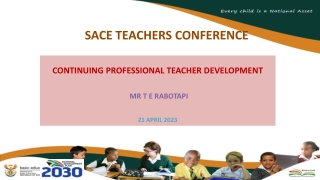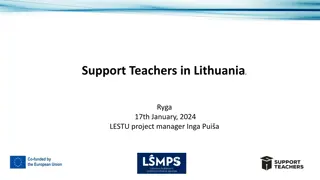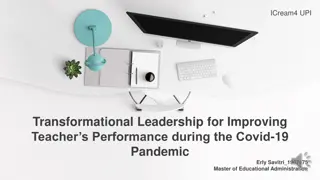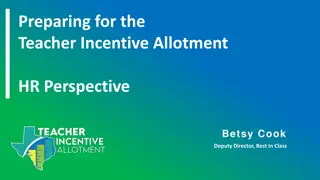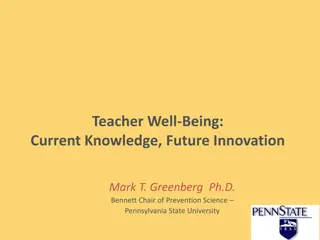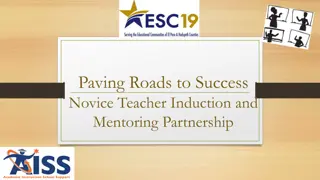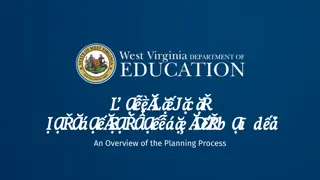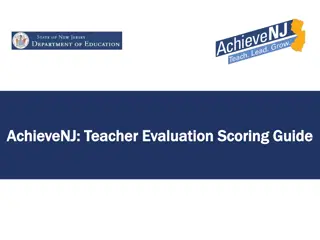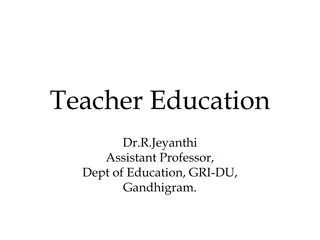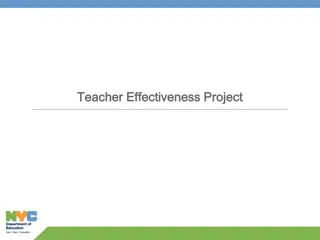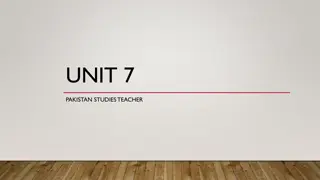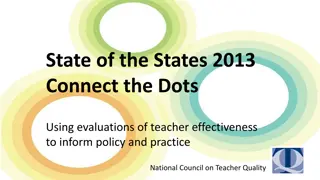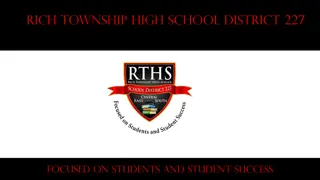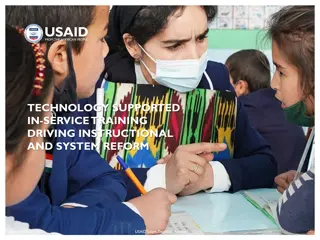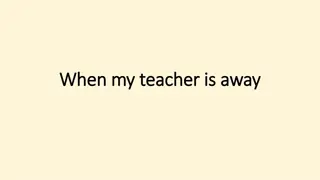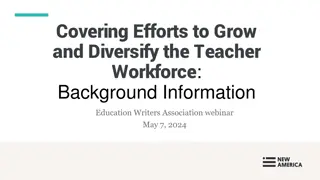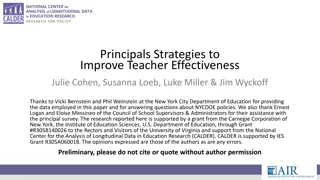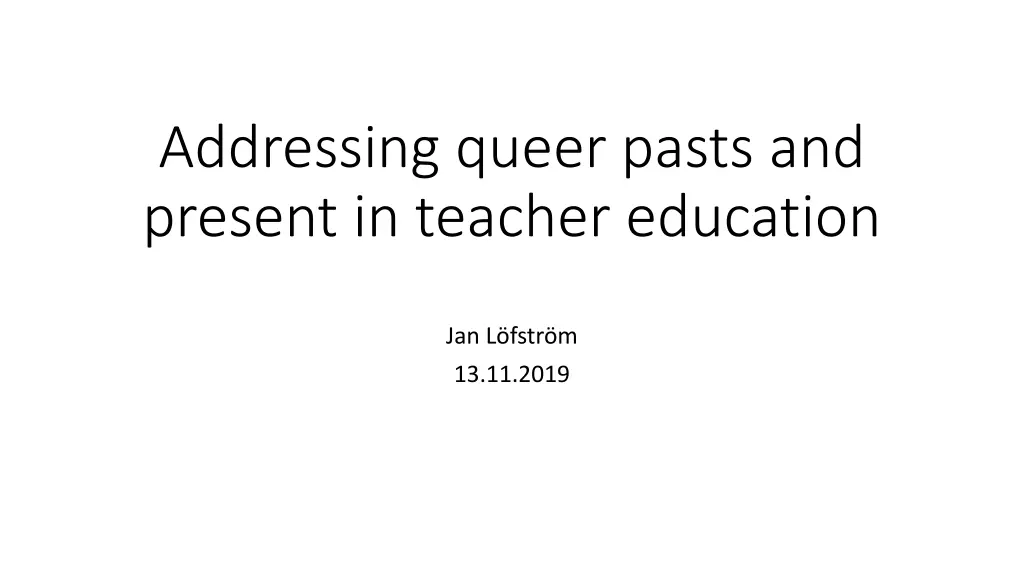
Addressing Queer Pasts and Present in Teacher Education
Explore the intersection of queer identities and education, delving into past and present perspectives. Engage with topics such as teacher pedagogy, gender dynamics in student performance, and societal views on education. Reflect on historical events, art, and educational practices to understand the nuances of teaching queer experiences.
Download Presentation

Please find below an Image/Link to download the presentation.
The content on the website is provided AS IS for your information and personal use only. It may not be sold, licensed, or shared on other websites without obtaining consent from the author. If you encounter any issues during the download, it is possible that the publisher has removed the file from their server.
You are allowed to download the files provided on this website for personal or commercial use, subject to the condition that they are used lawfully. All files are the property of their respective owners.
The content on the website is provided AS IS for your information and personal use only. It may not be sold, licensed, or shared on other websites without obtaining consent from the author.
E N D
Presentation Transcript
Addressing queer pasts and present in teacher education Jan L fstr m 13.11.2019
Content Recollections What is queer, part I Addressing queer present What is queer, part II Addressing queer pasts Poverty of teacher s pedagogical studies?
Recollections from encounters with subject teacher students, 2010 s Adam s charms and the benign heterosexist observer My unreflective binary thinking and its secretive critic How gender sensitivity turns into gender neutrality
Some questions to begin with students Why some school subjects (and their matriculation exam) are much more popular among boys than girls, or vice versa? What are the questions in the history/social studies matriculation exam with the biggest popularity difference between female and male students?
Production of energy in the world, 1850 2000, by different primary energy sources: how the situation has changed, and why ? Spring 2011 History Exam, question 2, answered by 72 % of the male, and 45 % of the female students in the exam.
The real interest rate in mortgages and the changes in house prices in Finland. Interpret the graph and explain why the curves. Spring 2008 Social Studies Exam, question 4, answered by 66 % of the male, and 40 % of the female students in the exam.
MichelangelosThe Creation of Adam . How does the painting reflect the view of the human being and the state of visual arts in this time (c. 1510) ? Autumn 2008, History Exam, question 3, answered by 44 % of the male, and 74 % of the female students in the exam.
and more questions Are there school subjects where boys and girls ought to be taught in separate groups? If yes, which school subjects, and why ? What could be the advantages/disadvantages of having separate schools for boys and girls? Should there be more male or female teachers in (Finnish) schools than there are now?
and more questions Are there school subjects where boys and girls ought to be taught in separate groups? If yes, which school subjects, and why ? What could be the advantages/disadvantages of having separate schools for boys and girls? Should there be more male or female teachers in (Finnish) schools than there are now? How about those who are neither one nor the other, or prefer not to remain stuck in the binary logic?
The importance of teacher being aware of the diversity of gender and sexual identities at school Teacher s professional ethical obligation to contribute to a school community where the pupils can feel safe and, for example, gender perform as they feel comfortable about. Styles and gestures (Hein maa 1994) of being (for example) a boy or a girl are many, basically all of them fine (some perhaps more toxique than others, though). Messages from the teacher that are supportive of the students unconventional gender performance can be justified as such performance otherwise can often be reduced by the peer group and others.
The importance of teacher being aware of the diversity of gender and sexual identities at school Teacher s professional obligation to contribute to a school community where the pupils can gender perform as they feel comfortable about. Styles and gestures (Hein maa 1994) of being (for example) a boy or a girl are many, basically all of them fine (some perhaps more toxique than others, though). Messages from the teacher that are supportive of the students unconventional gender performance can be justified as such performance otherwise can often be reduced by the peer group and others. This is NOT the same as arguing for a gender neutral school or acting as if gender did not matter, or trying to make all students the same.
What is queer in the present a-normative, unconventional, non-cis, non-paradigmatic muddying and messying (Burford & Allen 2018), with regard to genders and sexualities and why address it in teacher education, and how? Again ! : teacher s professional ethical obligation to contribute to a school community where the pupils can feel safe and also gender perform in the way they feel comfortable about. Let observations in school ethnographies speak to teacher students: sensitivity to how teachers and other in the school community easily reproduce unhelpfully reducing expectations about the right style in gender performance (Palmu 2003; Lehtonen 2003 ).
This is (relatively) easy The importance of recognising the queer (LGBTQI) youth at school is obvious and easy to justify, and addressed in literature (Block 2019; Maguth & Taylor 2014, Zacko-Smith & Pritchy Smith 2010 ). A topic for educational psychology and sociology of education that are well established in (most) teacher education units.
but how about addressing queer pasts in teacher education ? Queer in the past? What is strange to us , or has attracted attention in the past, or what is now given a queer reading ?
Why meaningful to address queer pasts Increasing reflexivity at the diversity of ground experiences , such as gender and sexuality in the past as well as in the present. Gaining understanding of the hegemonic by studying what is seen as an exception or deviance. Thinking beyond the conventional frame, suspending self-evident interpretations, probing new possibilities of looking at things.
Excursion: (Queer)reading the mind of an early 20th century teacher and politician: Hilda K kikoski (1864 1912) (Juvonen 1994) Daniel Nyblin/SKS Arkisto; noudettu https://www.naistenaani.fi/hilda- kakikoski-1864-1912-kansanedustaja- opettaja-kirjailija/ (12.11.2019)
in teacher education? For teacher students important to think of the educational system and the school also as historically situated. Things are not easy to change, but also things have been different from what they are now: recognising one s limits as an educator can be healthy, like also being inspired to think how tomorrow could be different.
A problem In teacher s pedagogical studies in Finland nowadays not much about history of education or philosophy of education, and also sociology of education may be very limited.
References Block, C. (2019) Educator affect: LGBTQ in social studies curriculum. Critical Questions in Education, 10 (1), 1 16. Burford, J. & Allen, L. (2018) Starting with queer: An enigmatic concept for higher education research and practice. In, Henderson, E. & Nicolazzo, Z. (eds) Starting with Gender in International Higher education Research. Routledge, 126 143. Hein maa, S. (1996) Ele, tyyli ja sukupuoli. Gaudeamus. Juvonen, T. (1994) Sukupuoli ja halu Hilda K kikosken kirjeenvaihdossa ja p iv kirjoissa. STM/Tasa-arvovaltuutetun toimisto. Lehtonen, J. (2003) Seksuaalisuus ja sukupuoli koulussa. Yliopistopaino. Maguth, B. & Taylor, N. (2014) Bringing LGBTQ topics into the social studies classroom. Social Studies, 105 (1), 23 28. Palmu, T. (2003) Sukupuolen rakentuminen koulun kulttuurisissa teksteiss . Helsingin yliopisto. Zacko-Smith, J. & Pritchy Smith, G. (2010) Recognizing and utilizing queer pedagogy. Multicultural education,2 9.

